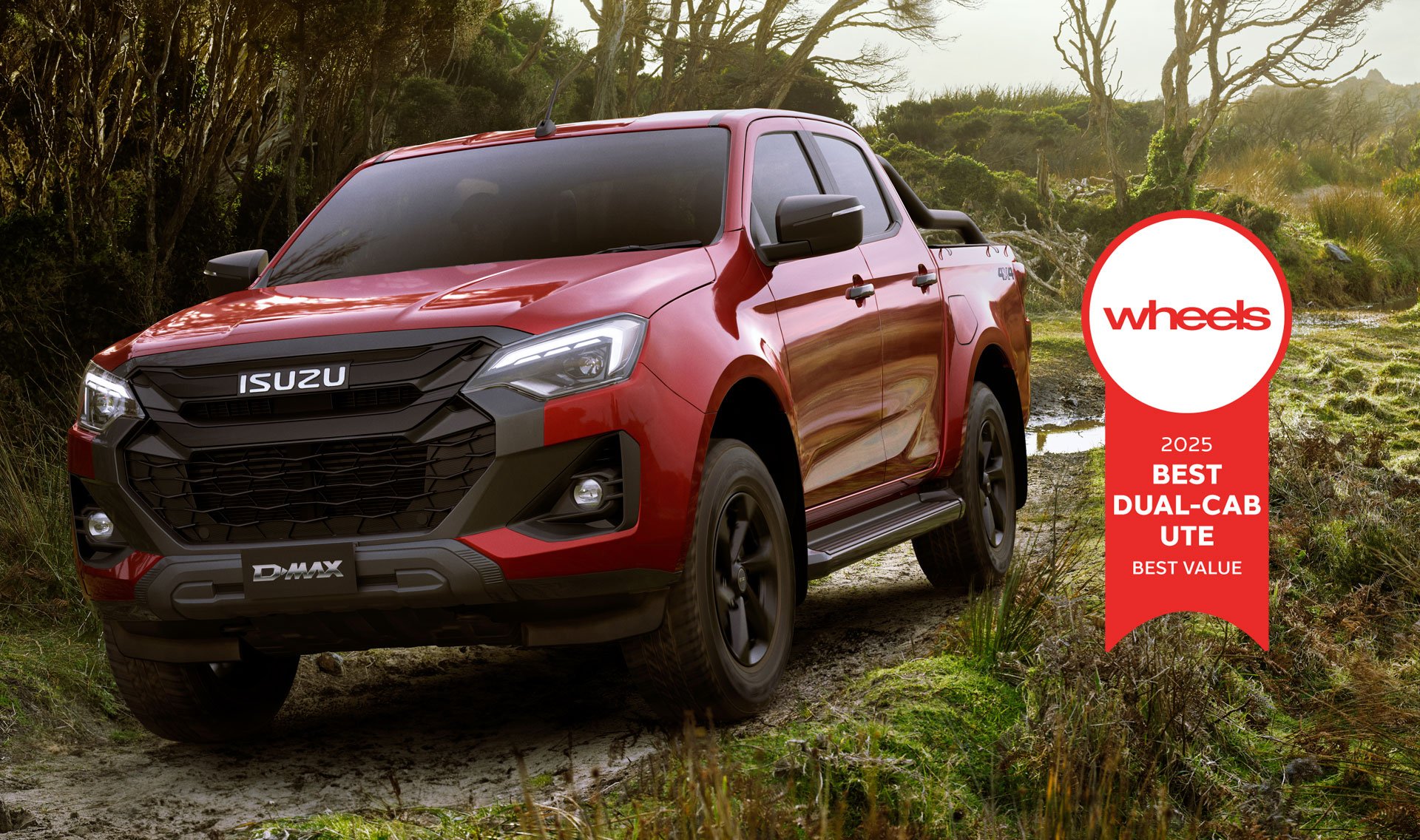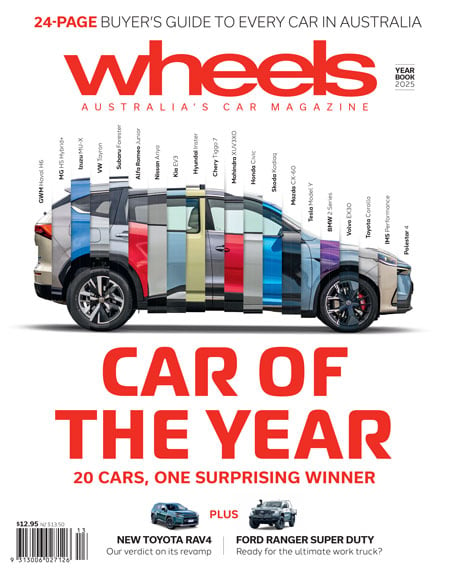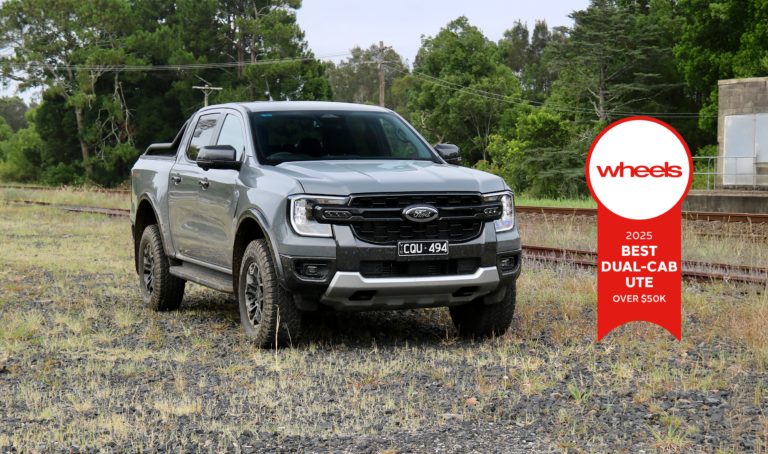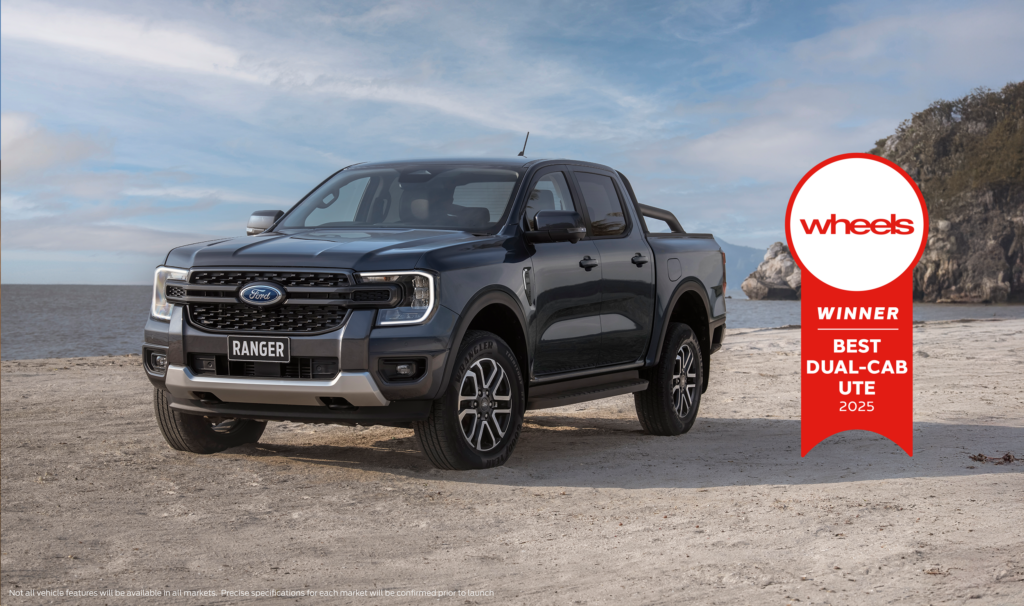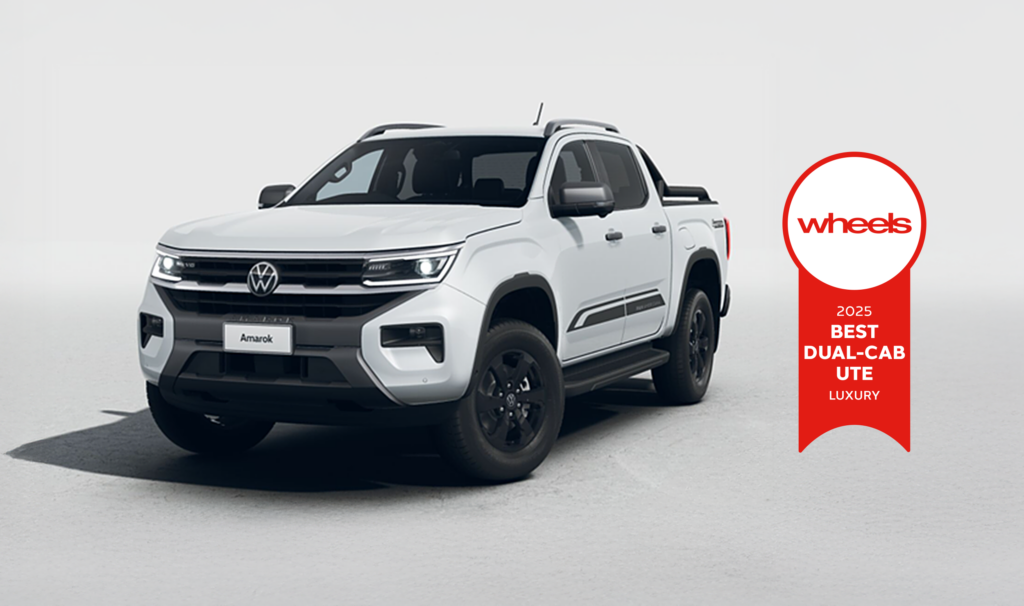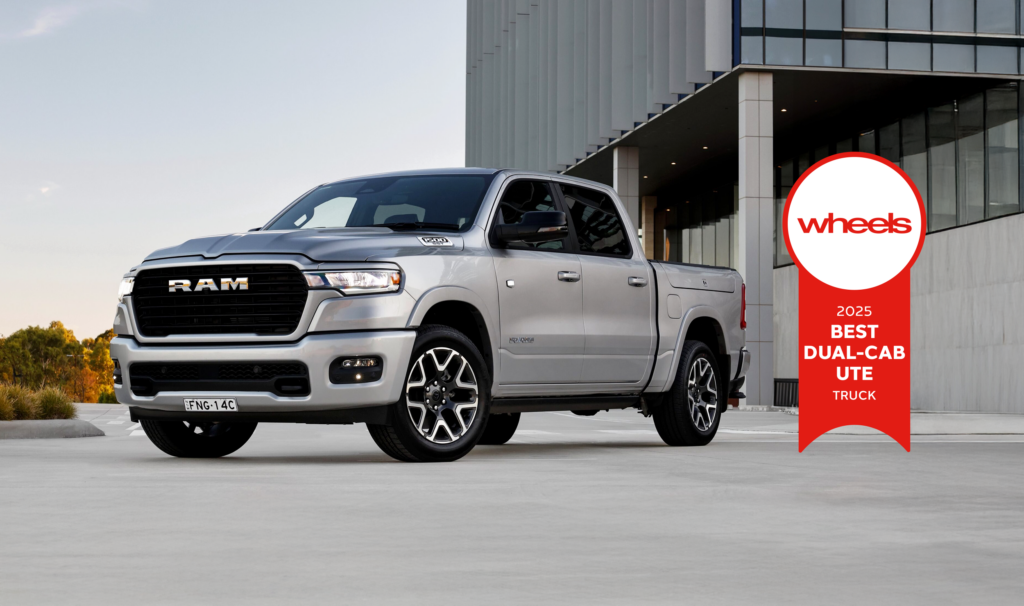Contenders
Winner – Isuzu D-Max X-Rider
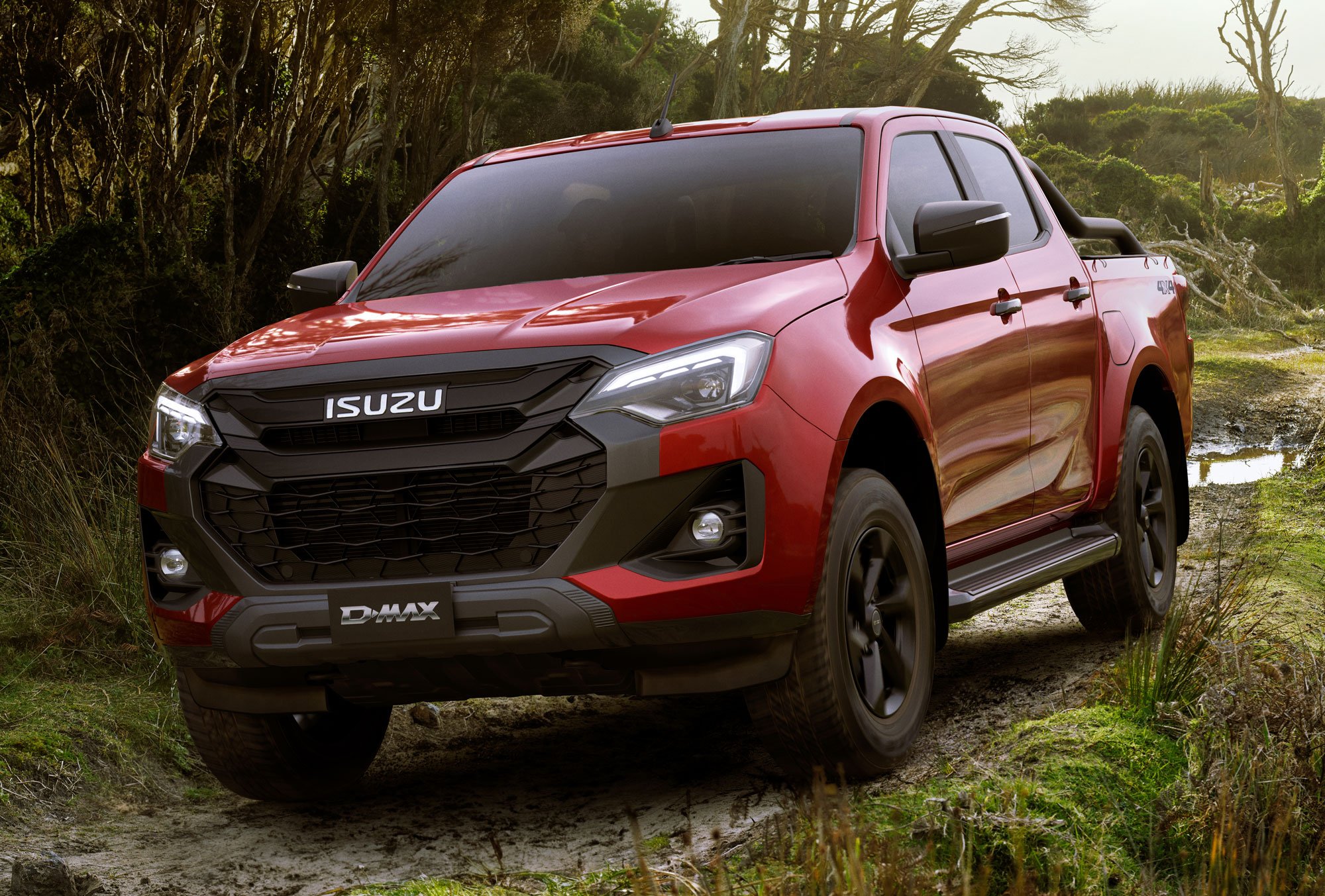
- Price: From $32,700 plus on-road costs (SX High-Ride 4×2 single cab manual) to $78,900 +ORC (Blade 4×4 dual cab auto); X-Rider from $57,990 drive away
- Drivetrain/economy/CO2 emissions: X-Rider – 3.0L turbo diesel: 140kW/450Nm, 6-speed auto, 4WD, 8.0L/100km, 207g/km. Also in the range – 1.9L turbo-diesel: 110kW/350Nm, 6-speed manual or auto, 2WD or 4WD, 6.7-7.0L/100km, 177-184g/km; 3.0L turbo diesel: 140kW/450Nm, 6-speed manual or auto, 2WD or 4WD, 8.0L/100km, 207g/km
- Dimensions: X-Rider 5280mm long, 1870mm wide, 1785mm tall, 3125mm long wheelbase
- Towing capacity/GVM/GCM: 2800kg -3500kg/3000kg – 3100kg/53700kg – 6000kg
- Warranty/roadside assistance/service intervals: Six-year/150,000 km, up to seven years months of roadside assistance with each dealer service, annually/every 15,000km
- Five-year service cost: $2,245 ($449 per year)
| Driving | |
|---|---|
| Interior | |
| Practicality | |
| Overall value |
Things we like
- Excellent safety equipment across the range
- Modern and feature-packed cabin
- X-Rider spec is great value for money
Not so much
- Trusty 3.0L diesel is loud
- Huge range can get confusing
- X-Rider misses out on leather wheel, climate control, etc
It’s easy to pigeonhole the Isuzu D-MAX as a crude but endearing workhorse that has built its own minor cult following. That’s to underplay the incremental development that has seen that D-MAX comfortably occupy the third spot in the Australian dual-cab ute sales charts for 2024, netting a near 12 per cent share of the market. That’s more than double the sales of the next best contenders, the Mitsubishi Triton and the Mazda BT-50. So Isuzu is clearly doing something very right.
No, the D-MAX can’t hold a candle to the Ford Ranger in terms of sophistication, but it’s not so very far off a Toyota Hilux. What’s more, it comes with a six-year warranty, although it does carry a 150,000km limit, which is something to consider if you’re cross shopping versus Toyota’s five-year, unlimited kilometre deal.
The X-Rider stands out, value-wise, because it adds a lot of exterior swagger to the lower-spec LS-M. The X-Rider is equipped with a 140kW/450Nm 3.0-litre turbo-diesel with six-speed automatic transmission, with four-wheel drive system. While the engine could be more refined, it is relatively fuel efficient in the real world with under 7.0L/100km fuel consumption easy to achieve on highways.
The 1.9-litre 110kW/350Nm powerplant that’s fitted to the SX Crew Cab entry-level versions should probably be given a wide berth, as for $2000 you can upgrade to the 3.0-litre with 140kW/450Nm. That’s money very well spent, as it nets you a far more flexible and relaxed engine. Because Isuzu only sells two models – this and the MU-X SUV – it keeps itself busy with a fully fleshed-out range of variants for each.
Therefore the steps from one model to the next are small and it pays to do your homework on which of the trims – SX, LS-M, X-Rider, LS-U, X-Terrain and Blade – is right for your requirements. The good-looking X-Rider Crew Cab is largely a dark-finish cosmetic pack above the LS-M grade, and will doubtless appeal to those who want a little more bling. The LS-M is $3700 cheaper and comes with Bi-LED headlights, 17-inch alloys and higher grade cloth interior. As you ascend the range, the price tag begins to look a little more self-conscious, with the flagship $73,990 Blade being the off-road focused one, broadly adjacent to a Ranger Tremor or a Hilux Rogue.
With a thriving owner community and a wide range of accessories available, plus parts support in some of the more remote reaches of Australia, the D-MAX does a lot to appeal to those who prize capability and aren’t afraid to take their ute off the beaten track. It might not be the number one pick here, but it’ll be the first port of call for many who are looking for something that more than punches above its weight.
JAC T9 Haven
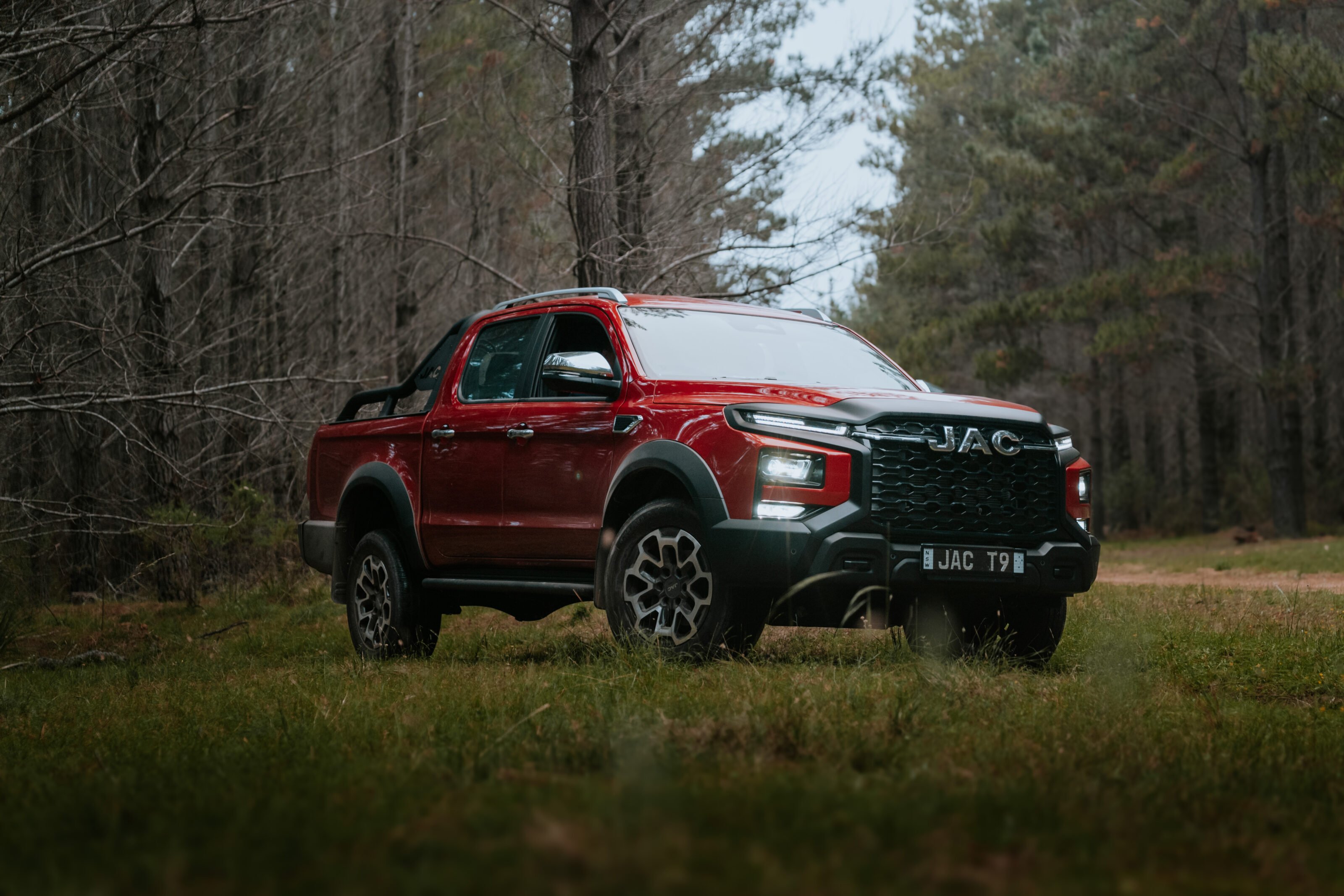
- Price: From $42,662 plus on-road costs (Oasis) – $45,630 +ORC (Haven)
- Drivetrain/economy/CO2 emissions: 2.0L turbo-diesel: 120kW/410Nm, eight-speed auto, 4WD, 7.6L/100km, 202g/km
- Dimensions: 5330mm long, 1983mm wide, 1920mm tall, 3110mm long wheelbase
- Towing capacity/GVM/GCM: 3200kg/3100kg/5630kg
- Warranty/roadside assistance/service intervals: Seven-year/unlimited km warranty, seven years of roadside assistance, annual/15,000km
- Five-year service cost: $2133 ($426 per year)
| Driving | |
|---|---|
| Interior | |
| Practicality | |
| Overall value |
Things we like
- Excellent value for money
- Great warranty and service package
- Feature-loaded across the range
Not so much
- Needs more grunt
- Rivals can tow more
- Ride quality needs finessing
The JAC T9 is a brand new product to the Australian market, having launched locally earlier this year. It offers not quite the same level of capability as segment leaders, but it is priced significantly less than them at just $42,662 plus on-road costs for the entry-level Oasis.
Under the bonnet of the T9 is a 120kW/410Nm 2.0-litre turbo-diesel engine that’s mated to a ZF eight-speed automatic transmission, which is noticeably less grunt than most competitors and as a result, its 3200kg braked towing capacity is 300kg less than its main rivals. On the road, the T9 is surprisingly refined and comfortable, though the ride quality is too stiff.
Inside the T9 Haven is a good quality and feature-packed cabin that compares well with rivals. Centre of the cabin is a large 10.4-inch touchscreen with features such as Apple CarPlay and Android Auto and it’s easy to use, though could feature more kit such as satellite navigation. The 7.0-inch digital driver’s display is small, however, and could use more functionality.
The T9 range is covered by a seven-year/unlimited km warranty with seven years of roadside assistance and five years/75,000km of servicing costs $2133 or $426 per annum, which is low in the segment. Overall, there are some clear improvements that need to be made to the JAC T9: more grunt for more on-road and towing performance and a smoother ride quality are the big ticket items. But if they’re no issue to you, the JAC T9 is worth consideration against more expensive rivals and the top-spec Haven model makes most sense as it includes a lot for under $50,000 drive away.
LDV T60 Max Mega Tub Plus
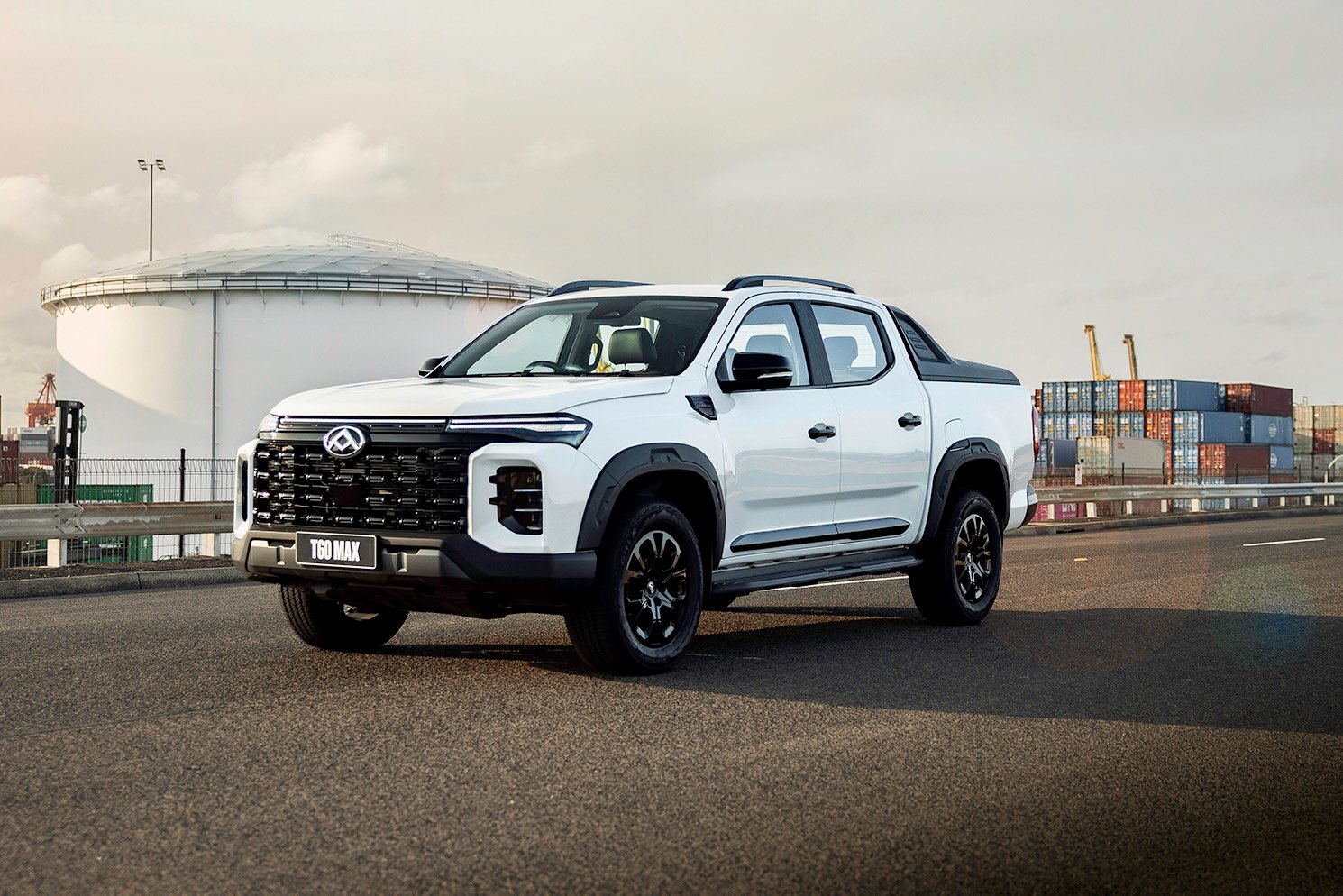
- Price: From $38,990 drive away (Pro) – $45,630 plus on-road costs (Mega Tub Plus)
- Drivetrain/economy/CO2 emissions: 2.0L twin-turbo diesel: 160kW/500Nm, eight-speed auto, 4WD, 7.9-8.1L/100km, 207-214g/km
- Dimensions: 5365-5710mm long, 1900-1926mm wide, 1815mm tall, 3155-3490mm long wheelbase
- Towing capacity/GVM/GCM: 3500kg/3050-3150kg/6250-6350kg
- Warranty/roadside assistance/service intervals: Seven-year/200,000km warranty, five years of roadside assistance, check up at six months/5000km, then annual/15,000km
- Five-year service cost: No capped price servicing
| Driving | |
|---|---|
| Interior | |
| Practicality | |
| Overall value |
Things we like
- Punchy 2.0-litre turbo-diesel engine
- Nicely appointed cabin
- Excellent value for money
Not so much
- No capped price servicing program
- Loud and unrefined engine
- AEB not standard on some variants
The LDV T60 has been on the Australian market for some time now, and has just received another update aimed at keeping it fresh. It received a futuristic new interior, an uprated twin-turbocharged diesel engine and updated styling to give it a more butch exterior look.
LDV also gave the T60 a new multi-link coil-spring rear suspension set up for a greater ride comfort, and it’s definitely more comfortable than the pre-updated model, especially in urban driving. Its new twin-turbo diesel engine boasts healthy figures in the segment: 160kW of power and 500Nm of torque, while it’s mated to an excellent ZF eight-speed automatic transmission.
Value remains a strong suit for the T60, with the top spec Mega Tub Plus available for comfortably
under $50,000 drive away. Features include AEB, adaptive cruise control, lane keeping assistance,
a 12.3-inch screens, a wireless phone charger and black 18-inch alloy wheels.
While the LDV T60 has a long seven-year/200,000km warranty with five years of roadside assistance, there’s no capped price servicing plan so dealers decide how much it will cost to service. That makes it tough for those trying to budget the running costs of their new vehicle.
Overall, the LDV T60 presents an interesting option in the ute segment, particularly if you’re value-focused. While some models are missing important safety tech, its service costs are unknown and its new – admittedly gruntier – twin-turbocharged diesel is unrefined and loud, it still has a lot going for it such as its tweaked design, new dashboard and improved ride quality.
GWM Cannon Ultra
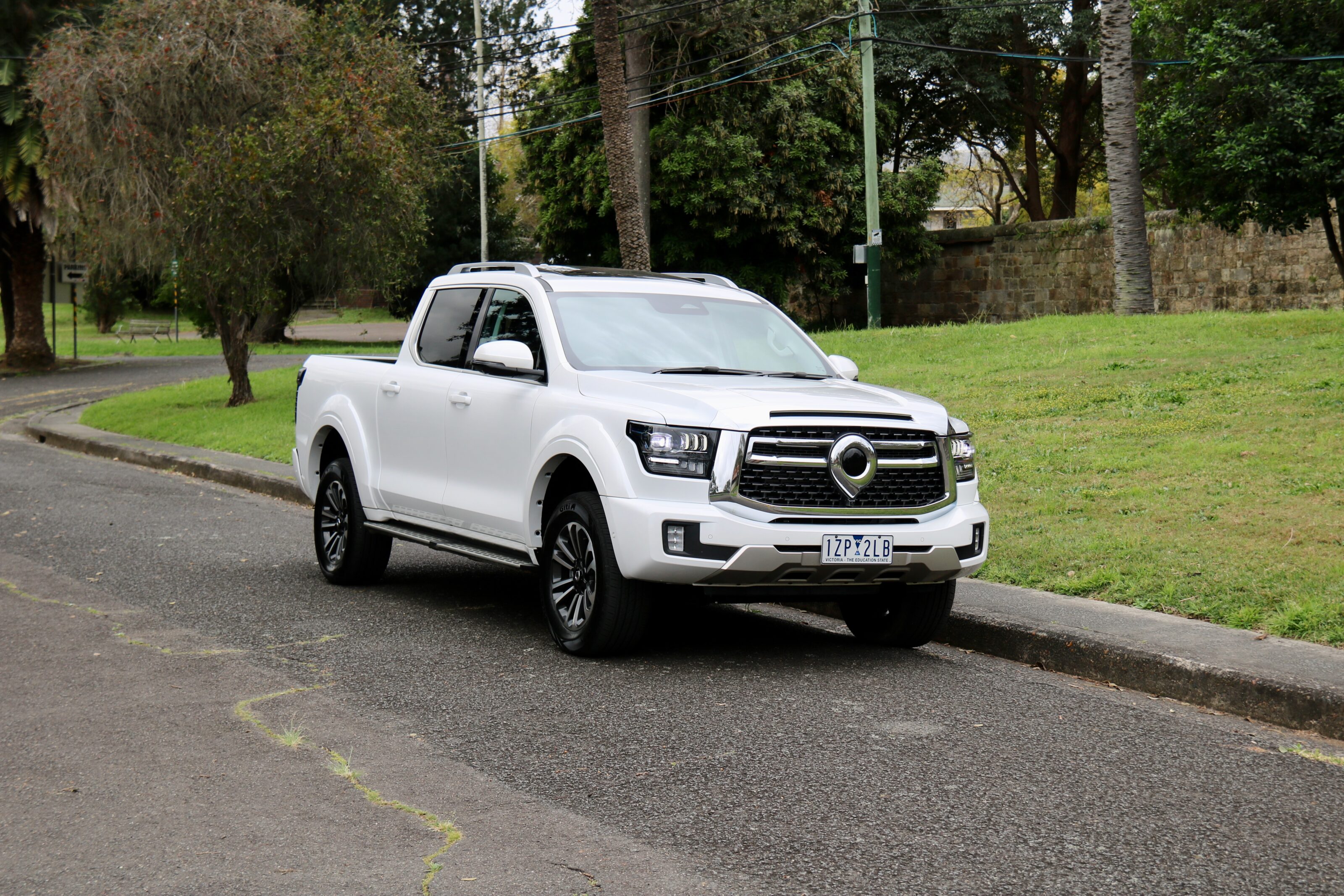
- Price: From $35,490 drive away (Premium 4×2 single cab) to $50,990 drive away (XSR 4×4 dual cab); Ultra from $44,490 drive away
- Drivetrain/economy/CO2 emissions: 2.0L turbo-diesel: 120kW/400Nm, 8-speed auto, 2WD or 4WD, 7.6-8.1L/100km, 199-214g/km; Ultra – 2.4L turbo-diesel: 135kW/480Nm, 9-speed auto, 4WD, 8.4L/100km, 221g/km
- Dimensions: 5416-5703mm long, 1947mm wide, 1884-1997mm tall, 3230mm long wheelbase
- Towing capacity/GVM/GCM: 3200kg -3500kg/3050kg – 3225kg/5590kg – 6300kg
- Warranty/roadside assistance/service intervals: Seven-year/unlimited km, five years of roadside assistance, yearly/first 10,000km and then every 15,000km afterwards
- Five-year service cost: $2065-$2530 ($413-$506 per year)
| Driving | |
|---|---|
| Interior | |
| Practicality | |
| Overall value |
Things we like
- Very well priced across the range
- Wide range of variants
- Surprisingly high quality interior
Not so much
- Stiff ride quality
- Strange service intervals
- Active safety systems need refinement
When the GWM Ute – as the Cannon was known then – arrived on the scene in 2021, it set a new level of value in the ute segment priced from just $35,490. Since then, GWM has updated the Cannon with a pretty serious facelift earlier this year delivering a more powerful engine, an updated interior and more features. Pleasingly though, the Cannon’s value equation is still excellent – the top-spec XSR is only $50,990 drive away.
Having said that, we’d go for the Ultra that’s priced at $44,490 drive away. Equipment on the Ultra still includes synthetic leather trim, a 12.3-inch touchscreen, heated front seats, a wireless phone charger and active safety features such as AEB, adaptive cruise control, lane keeping assistance and a 360-degree camera.
Under the Cannon’s bonnet is either a 2.0-litre or a beefier 2.4-litre four-cylinder turbo-diesel engine, with the 2.0L mated to an eight-speed auto and the 2.4L a nine-speeder, to ensure that you’re always in the power band accessing the full 480Nm of torque. Driving the Cannon is a totally fine experience, with light steering and good refinement, though the ride is too stiff.
Inside the Cannon is a great quality and seemingly luxurious (for the segment) interior with a lot of soft touch materials and good practicality. The 12.3-inch touchscreen is responsive and features wireless phone connectivity, while the rear seat is roomy enough for two adults.
The GWM’s seven-year/unlimited km warranty is one of the best in the ute segment, while its service intervals are a bit off though servicing isn’t expensive. Overall, the GWM Cannon presents as a great value and good all-round ute that deserves consideration if you’re after a bargain.
KGM Musso Ultimate XLV
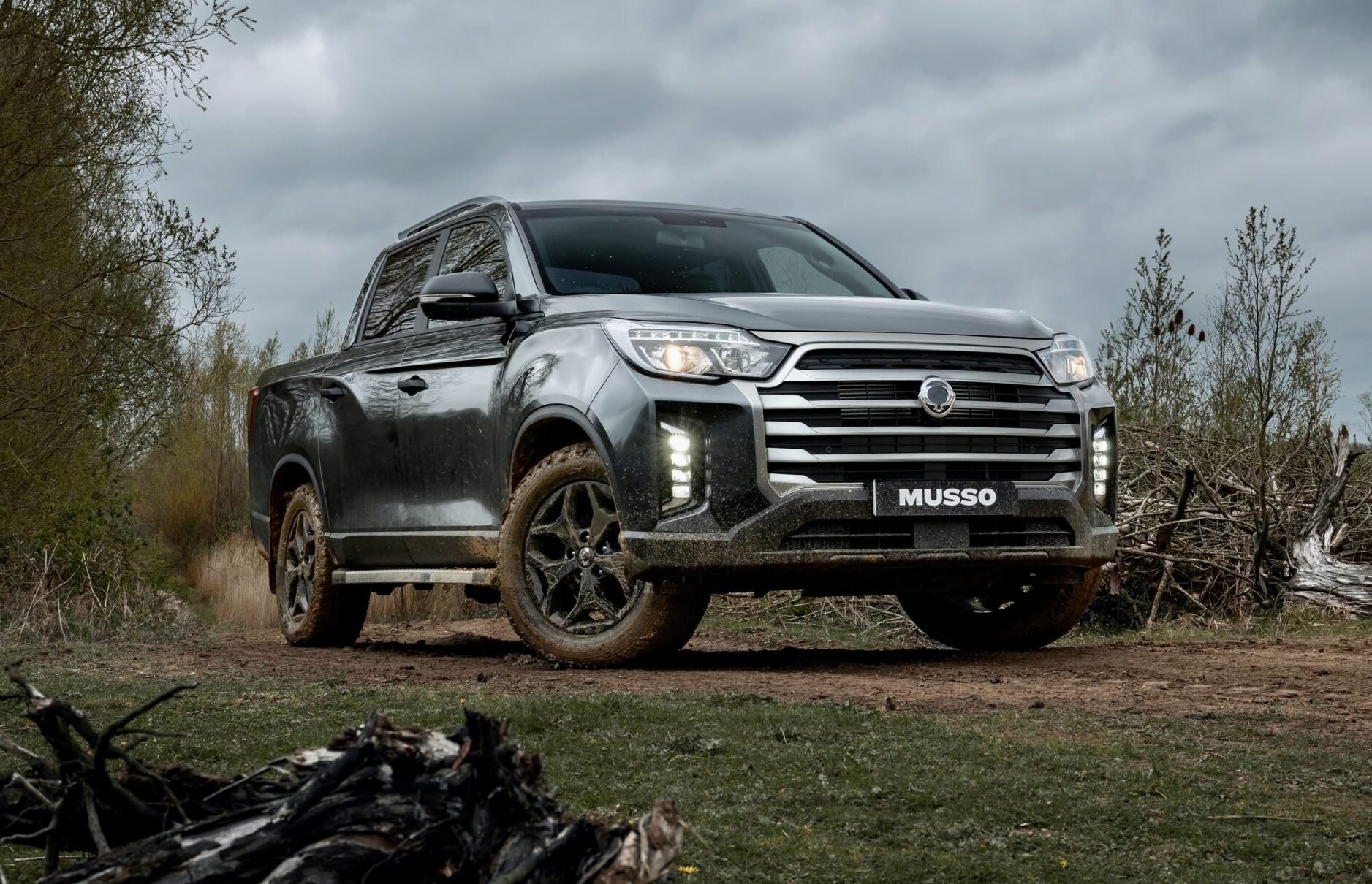
- Price: From $38,000 drive away (ELX) to $44,200 drive away (Ultimate); Ultimate XLV – from $41,500 drive away
- Drivetrain/economy/CO2 emissions: 2.2L turbo-diesel: 133kW/400Nm, 6-speed auto, 4WD, 8.6-9.0L/100km, 226-236g/km
- Dimensions: Up to 5409mm long, 1950mm wide, 1855mm tall, 3210mm long wheelbase
- Towing capacity/GVM/GCM: 3500kg/2880-2980kg/6380-6480kg
- Warranty/roadside assistance/service intervals: Seven-year/unlimited km, five years of roadside assistance, annual/every 15,000km
- Five-year service cost: $2298 ($459 per year)
| Driving | |
|---|---|
| Interior | |
| Practicality | |
| Overall value |
Things we like
- Excellent value for money
- Optional XLV pack adds further capability
- Great warranty and service package
Not so much
- More grunt would be appreciated
- No more manual option
- Outdated lap-only rear middle seatbelt
If you’re looking for a good all-round ute that won’t break the bank, we think that the KGM Musso should be at the top of your test drive list. Not only is it excellent value for money, but it’s also quite comfortable, good to drive, well equipped across the range and spacious on the inside.
Priced from just $38,000 drive away for the entry level ELX, even with the optional extended length XLV package and the optional Luxury Package for features such as a sunroof and even heated outboard rear seats, the top-spec Musso Ultimate doesn’t touch $50,000 drive away. Remember when utes used to be that cheap?
Under the bonnet of the Musso range is a 2.2-litre turbo diesel engine paired to a six-speed automatic transmission and a part-time four-wheel drive system. Making 133kW/400Nm outputs (420Nm in XLV variants), it’s outshone in the grunt department by many rivals – we’d love to see its Rexton SUV sibling’s 148kW/441Nm tune applied, and eight-speed auto fitted – but it’s still quite a willing drivetrain that’s quite refined for the segment.
The Musso isn’t perfect as it only has a lap sash seatbelt for the middle rear seat and there’s no single cab or manual transmission options, but the KGM Musso is a great option if you’re after a value-priced ute that just does its job well. That it’s covered by a long warranty and isn’t expensive to service is just the cherry on top.
Mitsubishi Triton GLX-R
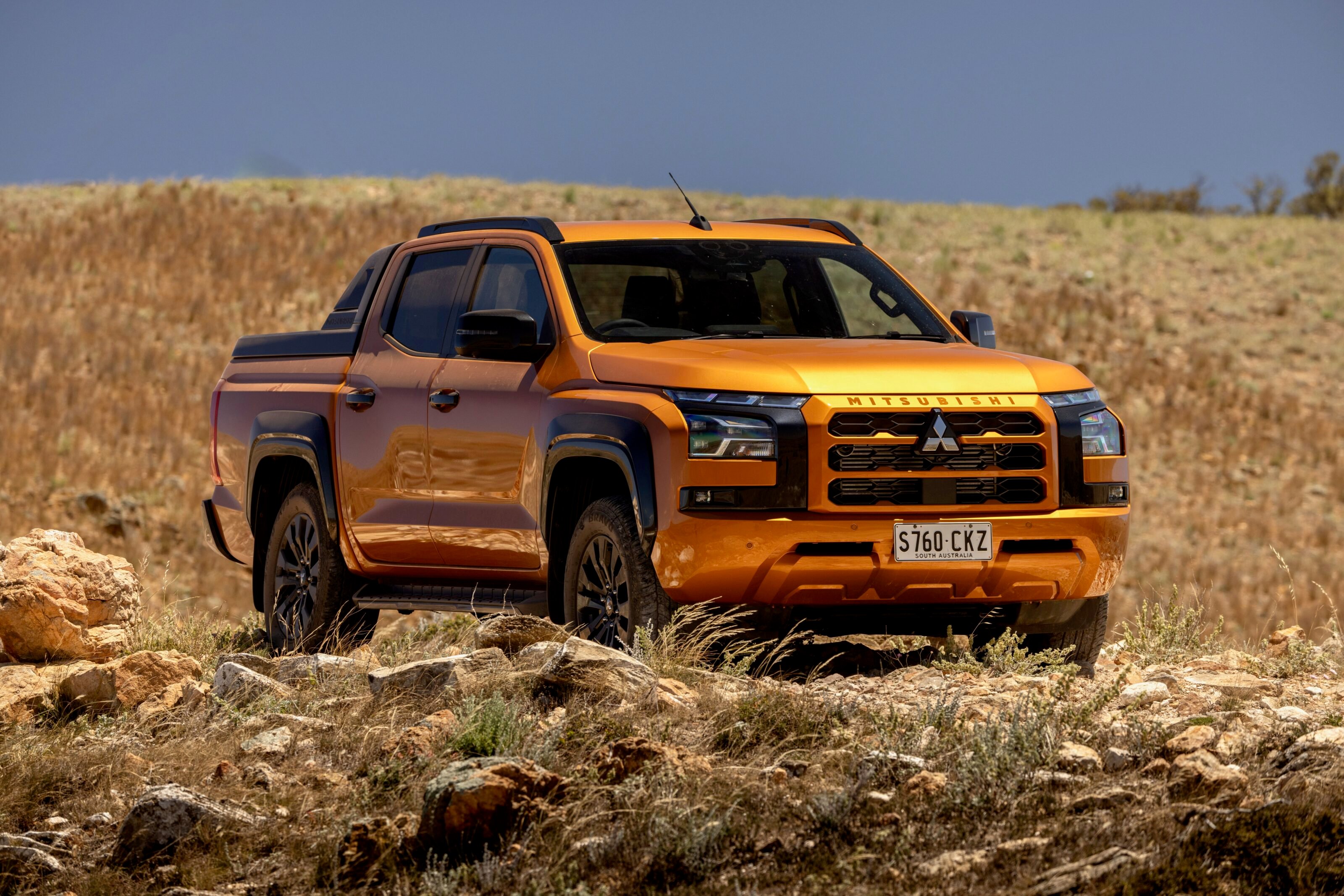
- Price: From $34,490 plus on-road costs (GLX 4×2 Single Cab manual) to $63,840 +ORC (GSR); GLX-R – from $56,490 drive away
- Drivetrain/economy/CO2 emissions: 2.4L bi-turbo diesel: 140kW/470Nm, 6-speed manual or auto, 2WD or 4WD, 7.4-7.7L/100km, 195-203g/km
- Dimensions: Up to 5320mm long, 1865mm wide, 1795mm tall, 3130mm long wheelbase
- Towing capacity/GVM/GCM: 3500kg/3070kg – 3200kg/6210kg – 6250kg
- Warranty/roadside assistance/service intervals: Five-year/100,000km, extendable to 10-years/200,000km, 12 months of roadside assistance with each dealer service up to four years in total, annually/15,000km
- Five-year service cost: $2545 ($509 per year)
| Driving | |
|---|---|
| Interior | |
| Practicality | |
| Overall value |
Things we like
- Grunty bi-turbo diesel engine standard across the range
- GLX-R is great value for money
- Good refinement in the segment
Not so much
- More expensive than it used to be
- Manual only on base models
- No hybrid drivetrain yet
Released in 2024, the current shape Mitsubishi Triton received a big upgrade into its current generation to make it more modern and feature-rich, but also more capable and practical than ever before.
Under the bonnet of every Triton model is a new bi-turbo 2.4-litre four-cylinder diesel engine that outpunches rivals such as the Isuzu D-Max while also giving the Triton the industry standard 3500kg braked towing rating. On the road, the new Triton is a big improvement over the previous model, while giving a more solid road feel than some rivals. Its new engine is refined as well, especially against the loud 3.0L unit in the D-Max/BT-50 twins, though it would be great to see a plug-in hybrid variant as Mitsubishi is a pioneer in the PHEV space.
We’d be choosing the mid-spec GLX-R that’s currently available for a very reasonable $56,490 drive
away and features equipment such as a leather steering wheel, automatic climate control, a 9.0-
inch touchscreen with wireless smartphone mirroring and a full safety suite including a 360-degree
camera, AEB, adaptive cruise control, lane keeping assistance and blind-spot monitoring.
The cabin of the Triton is a massive improvement on the previous shape with better quality, more tech – a 9.0-inch touchscreen with wireless smartphone mirroring is standard across the range – and more practicality, with more rear seat space than the previous model.
While the standard warranty is a five-year/100,000km job, if it’s kept serviced at a Mitsubishi dealership after that, up to 10 years of warranty is available and its five-year service cost averages out to a reasonable $509 per year. Add in its big improvement over the previous model, its comfortable driving experience and grunty engine, and the Triton is a worthy ute option.

